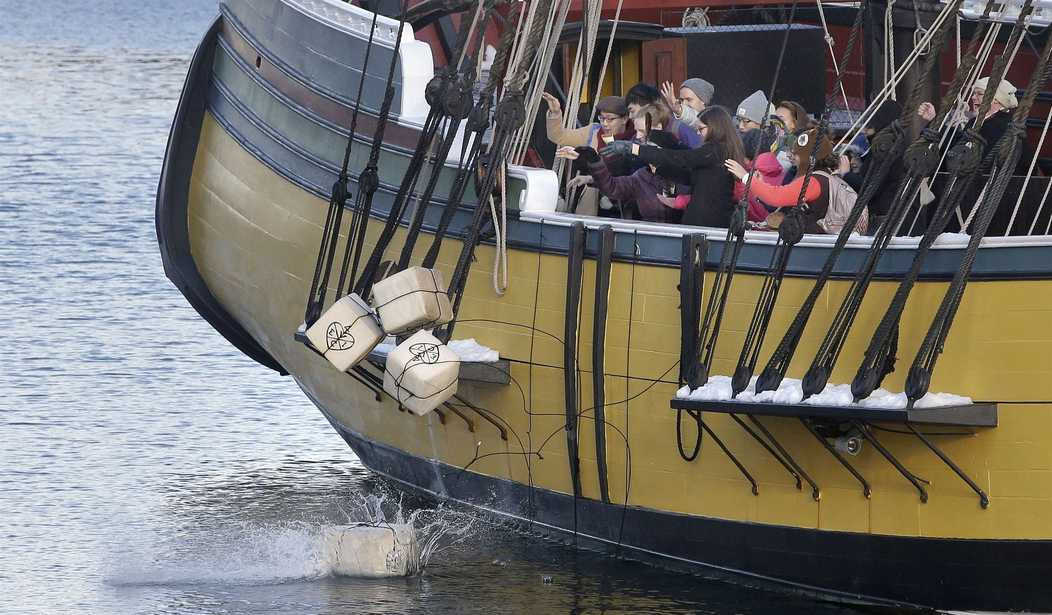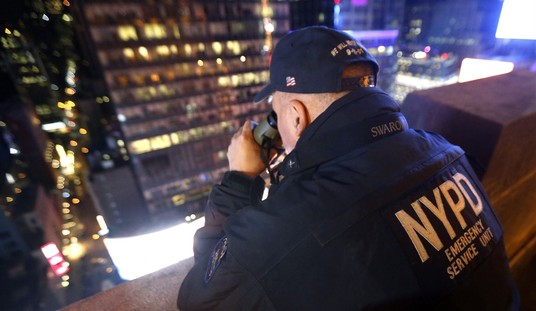We often hear that the Boston Tea Party was all about the colonists' refusal to pay a tax on tea because it was too high and that most of the participants dressed as Native Americans.
The truth is that the tea tax lowered the cost of tea and few colonists in the dead of winter dressed in Native American garb.
It wasn't unique for the American colonists to dress as Native Americans to protest various British policies. The Boston Tea Party, which happened 250 years ago on Dec. 16, 1773, was just one in a long line of appropriating Native American dress to be perceived as courageous and creating their own American identity.
There have been a lot of myths and falsehoods that have grown up around the Tea Party. The act of vandalism was not supported by the elites or most of the colonists for that matter.
Indeed, throwing £10,000 worth of tea over the side of a ship was a shocking display of lawlessness that eventually led to the closing of Boston Harbor in order to prevent any such outrageous conduct from happening again.
George Washington, a prominent Virginian and hero of the French and Indian War, denounced the criminals’ conduct and declared them “mad.” Benjamin Franklin called for the perpetrators to reimburse the ruined goods’ owners and “set [the colonists] right in the opinion of all Europe.” But the pair’s disdain wasn’t universal: John Adams, at the time a Boston-based lawyer and writer, was one of the few to voice his approval, praising the men’s actions as “so bold, so daring, so firm, intrepid and inflexible.”
Perhaps the biggest myth surrounding the Tea Party was the reason for it. The Boston Tea Party was not a demonstration against high taxes on tea. The taxes were actually a corporate tax break passed by Parliament that lowered the price of tea for Americans. That was by design. The crown figured that Americans would gladly pay a lower price for tea and thus fill the royal coffers with taxes. Recall that the Intolerable Acts had all been rescinded except for the single tax on tea.
The colonists who threw the tea into the harbor knew that if ordinary people ended up paying the lower price for tea and thus paying the tax, their argument of "No taxation without representation" would be moot and the crown and parliament would have made a critical point.
Nathaniel Sheidley, head of Revolutionary Spaces, a nonprofit that oversees two colonial sites in Boston, isn’t surprised that modern Americans misremember their nation’s founding history. “We constructed the story [of the Tea Party] in order to serve the needs of a later time,” he explains, creating “a shared memory that could fill a space of national identity.” During the 19th and 20th centuries, Americans similarly mythologized events like the first Thanksgiving, the arrival of the Pilgrims and the midnight ride of Paul Revere.
The real story of the Tea Party is inspiring.
On December 16, more than 5,000 colonists flocked to the Old South Meeting House, where leading Sons of Liberty like Adams and Hancock gave impassioned speeches. Adams reportedly said he “could think of nothing further to be done,” or, alternatively, that “this meeting can do nothing more to save the country.” The Tea Party began soon after, with hundreds of men—most of them Sons of Liberty—taking to the streets, many in Native-inspired disguises. Some likely planned the protest ahead of time, but others joined “more spontaneously on the day of the event,” says Carp. (Adams and men of similar stature “ostentatiously stayed behind” at the meeting house, “perhaps to give themselves a kind of plausible deniability,” Carp adds.)
One of the reasons for the disguises was that Boston was still a small town. With only 15,000 people, the chance of someone recognizing a tea partier's gait or dress was fairly high.
Eyewitness accounts of the Tea Party are scarce, as participants knew that destroying private property “was a violation of the law and that the punishment could be severe,” says Sheidley. “Steps were taken to ensure that nothing was documented, so [the story] emerged by oral tradition well after the fact.” Today, historians know the names of 116 men who took part in the Tea Party. The majority were under the age of 40. Most were of English ancestry, but Irish, Scottish, French, Portuguese and African heritage were also represented.
The Sons of Liberty have been glorified over the last 200 years even though they were considered at the time to be hooligans and something akin to gang members today. Paul Revere and Sam Adams saw them as useful bullies who intimidated pro-British Bostonians.
But when the time came to fight for American independence, they didn't shrink from the battle. Many of them died on Breed's Hill in 1775.










Join the conversation as a VIP Member